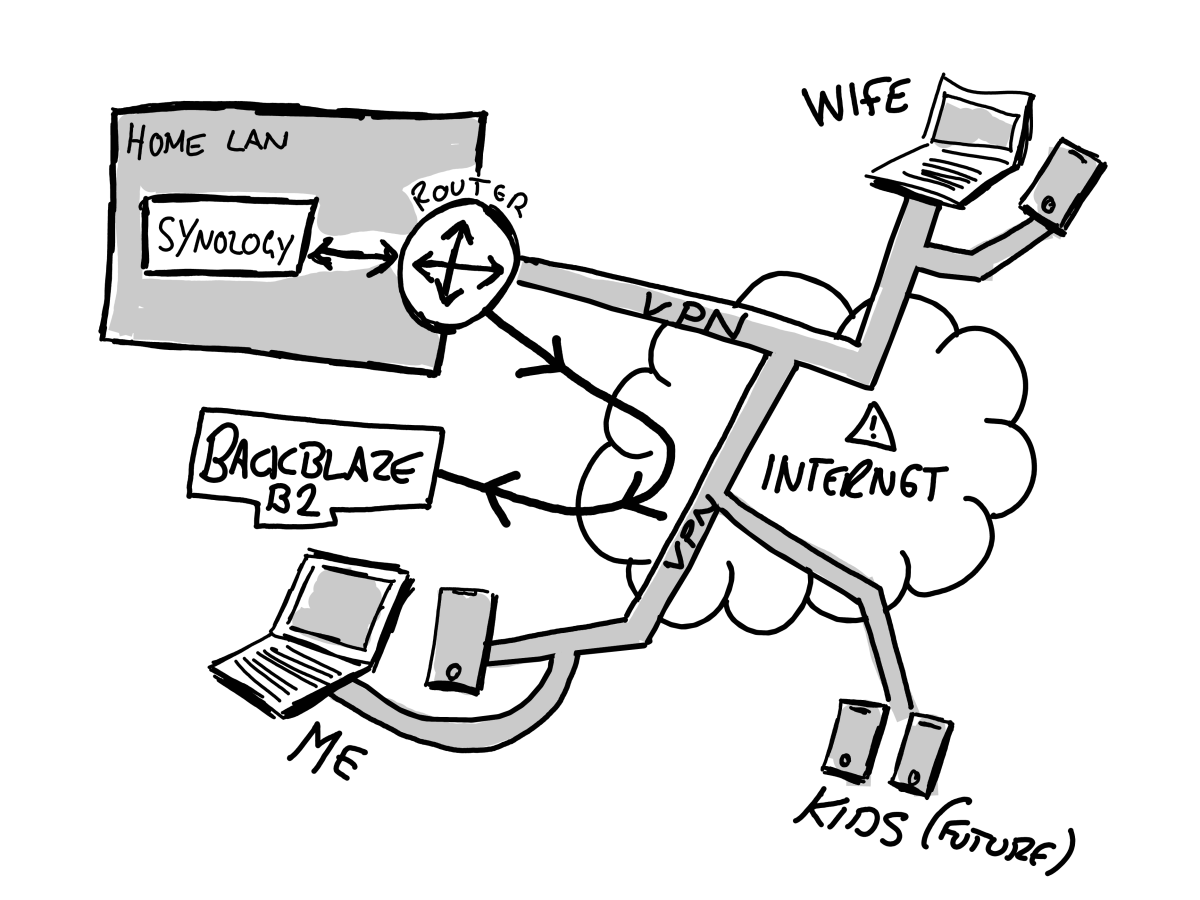2025-12-19 18:07:00
I've been using Firefox for over 20 years at this point, but after a stream of cock-ups, I'm thinking about moving on.
I’ve been using Firefox since 2005, so not long after it was first released. I distinctly remember the first time I heard about it - I was on a training course with the Army and the instructor was using Firefox. Netscape was effectively dead, and everyone was using Internet Explorer, but I’ve always been a magpie for the new shiny, so when I saw his browser, I asked him about it.
He told me about it being a fork of Netscape (which was my browser of choice when I first started using the Internet), so I jumped on board and have been happily using Firefox ever since.
Well, I was happy up until the last few years.
I first wrote about my concerns with Firefox’s direction back in 2022 where I talked about the ever increasing CEO salary, despite their ever decreasing market share, their teaming up with Meta on Interoperable Private Attribution (IPA), them shilling cryptocurrencies, and of course the fact they’re pretty much entirely funded by Google.
Well, over the last 3 years, things haven’t gotten any better and my concerns around the direction Mozilla is taking Firefox have continued to rise.
On top of the few concerns I had back in 2022, there’s a bloody list of additional concerns I’ve picked up since then:
Mozilla have been getting a lot of shit for the last few days about the whole modern AI browser comment their new CEO made. And rightly so, I think. To me, there’s a clear difference between a browser that has AI capabilities embedded in it, like an AI chat bot, and an AI browser.
The latter aren’t browsers. They’re an abstraction layer between you (the user) and the web, summarising, filtering, and rewriting it before you ever see the original, and I have no desire to be a part of that mess.
I don’t mind having a browser with a chat bot embedded in it, as long as it can be switched off. I’d prefer for it to be opt-in, but meh, if it’s only a rocker switch in settings, while annoying, I can live with it.
But having this layer of abstraction between me and the web that I know and love? No thank you.
I’m worried about the direction Firefox is headed in. Not just because of their AI strategy; I actually think that’s a symptom, not the root cause.
The root cause, as I see it, is that the leadership team at Mozilla has no fucking clue how to make Firefox a sustainable business, so they’re just throwing shit at the wall and hoping something sticks. All while giving their CEO larger and larger salaries.
Because Mozilla has been suckling on Google’s teat since the very early days, they’ve never had to make a sustainable business. Google dodged the bullet and wasn’t ultimately forced to sell Chrome, but it exposed just how dependent Mozilla still is on Google’s money, and now it looks like they’re scrambling to invent a strategy of their own.
But it’s shit, and as a long-term user of Firefox, it feels almost user-hostile at this point.
Honestly, I don’t know. I’ve been dabbling in other browsers, but haven’t found anything I like as much as Firefox.
While I appreciate the sentiment, I’m not looking for browser recommendations. So please don’t contact me with recommendations. By all means contact me with your opinions on all this though.
Vivaldi has too many bells and whistles for my liking, plus there’s a number of UI inconsistencies that annoy me. Brave has all the crypto nonsense embedded, but it can be switched off. Then there’s forks like Librewolf and Waterfox, but they’re intrinsically tied to upstream Firefox, and they don’t have mobile apps. So I’m not sure they’re a good option, either.
Correction from future Kev: Waterfox does in fact have an Android app.
Firefox won’t be changing to a modern AI browser any time soon, so there’s no rush for me to jump right now. So I’m planning to continue testing alternatives and just hope that the Mozilla leadership team have a course correction. But if the last few years have taught me anything, it’s that a course correction is unlikely to happen.
Thanks for reading this post via RSS. RSS is great, and you're great for using it. ❤️
You can reply to this post by email, or leave a comment.
2025-12-03 22:17:00
I didn't expect a parable about a fisherman to smack me in the face with such clarity, but here we are.
While reading Grow slowly, stay small on Herman’s blog, I learned about The Fisherman and The Businessman, which goes like this:
A businessman meets a fisherman who is selling fish at his stall one morning. The businessman enquires of the fisherman what he does after he finishes selling his fish for the day. The fisherman responds that he spends time with his friends and family, cooks good food, and watches the sunset with his wife. Then in the morning he wakes up early, takes his boat out on the ocean, and catches some fish.
The businessman, shocked that the fisherman was wasting so much time encourages him fish for longer in the morning, increasing his yield and maximising the utility of his boat. Then he should sell those extra fish in the afternoon and save up until he has enough money to buy a second fishing boat and potentially employ some other fishermen. Focus on the selling side of the business, set up a permanent store, and possibly, if he does everything correctly, get a loan to expand the operation even further.
In 10 to 20 years he could own an entire fishing fleet, make a lot of money, and finally retire. The fisherman then asks the businessman what he would do with his days once retired, to which the businessman responds: “Well, you could spend more time with your friends and family, cook good food, watch the sunset with your wife, and wake up early in the morning and go fishing, if you want.”
– Herman Martinus
Ah man, preach! This resonated so much because I recently realised that I’m The Fisherman. Well, to be more accurate, I was The Fisherman posing as The Businessman. Now I’m just The Fisherman, and it’s lovely.
Since stepping down as an executive I’ve become happier, got far more job satisfaction, and I spend more time with my family. I’ve also realised that a lot of what was driving me was ego. I wanted to be important. I wanted the fancy title, the corner office, the prestige.
I wanted the job for all the wrong reasons.
I’m not saying all execs are egomaniacs. I’m saying my reasons for chasing that level were mostly ego. That’s on me.
At this point I have what I think is the perfect balance between pay, free time, and job satisfaction. I love my job again and I’m really fucking happy.
What’s the point of this post? Honestly, I have no idea. I just wanted to share this great little parable and say thanks to Herman for sharing it originally. If you’re not happy with your job, maybe it’s worth asking which one you’re being right now.
Thanks for reading this post via RSS. RSS is great, and you're great for using it. ❤️
You can reply to this post by email, or leave a comment.
2025-12-01 20:00:00
We're been living on our smallholding in Wales for 3 years now. Here's how things have been going this year.
I’m a little late with my update this year because I’ve had a few things going on at home. This has accidentally become an annual tradition at this point, so I’m gonna roll with it.
I re-read last year’s update to see what I did and, more importantly, what I’d listed in the closing what’s next? section. It included:
Well, dear reader, most of that plan went to utter rat shit this year. Aside from continuing to work on the garden, we got absolutely nothing on the list done. That’s mainly because we ended up having to replace the entire roof on the house, which is still ongoing as I write this.

Worse still, because the new roof is heading into winter, we’ve had lots of rain. That in turn means leaks in the house, the worst of which has been in my oldest son’s bedroom. If you read last year’s post, you’ll recall we only renovated that room last year. 😡

If you’ve never had to put a new roof on your house, firstly you’re very lucky. But secondly, they’re really expensive. So that has meant we haven’t had any disposable income for other projects.
We managed to plant some wildflowers in the far field, which one of our neighbours who keeps bees is very appreciative of.
 Wild flowers starting to come through in field
Wild flowers starting to come through in field
We also had a load of groundwork done at the back to flatten some of it off. They ended up moving 50 tonnes of soil from the area to make it level. Our hope is that this summer we’ll be able to enjoy drinks and barbecues on the new flat piece of land.

We’re also continuing to improve the chicken coop. We now have a fairly large enclosed outdoor space for them, mainly because of bird flu in the and the council applying restrictions on where they can roam. We’ve also grown the flock to 17 hens and a rooster.
The list for this year is going to be similar to last year’s. I just hope there will be fewer expensive surprises.
We’re hoping to add a polytunnel so we can grow more of our own vegetables. I’d also like to insulate the roof in the conservatory as it’ll effectively give us another room we can use all year round.
The bathrooms, toilet and kitchen will have to wait. We’ll just have to see how the cashflow looks. If next year I can get the polytunnel and conservatory done, I’ll class that as a win. I’d love to get a quad bike for towing the flail too, but again…money.
All in all it’s been a difficult year at the smallholding, but we have a new roof, so that’s good. I suppose…
Thanks for reading this post via RSS. RSS is great, and you're great for using it. ❤️
You can reply to this post by email, or leave a comment.
2025-11-28 15:51:00
I recently replaced my son's broken PC with a 2015 iMac from eBay. Here's how it went...
A year or so ago, my wife and I gave our oldest son a spare computer we had lying around. This was mainly for homework, but also for some light gaming, like Minecraft and Super Tux Cart. The machine was actually the little home server I built a few years ago.
At 6 years old the motherboard decided to give up the ghost and blew. After talking to him about it, we decided to look for something a bit smaller and cool looking. Originally I was going to go with one of those Raspberry Pi keyboards, but they’re £200 and would likely struggle playing Minecraft.
Then I read about someone loading Linux onto an old Mac with great success (I can’t remember who it was, so can’t provide a link I’m afraid). Anyway, I’ve always loved the look of the old iMacs, so decided to have a peek on eBay for one.
I ended up finding a late-2015 21.5” iMac with 8GB RAM, a 1TB HDD, and a 4th Gen Core i5 processor for £88, delivered!
For that price I wasn’t expecting much. But it looked clean in the pictures, so I decided to take a punt.
While waiting for it to arrive, I ordered CPU paste, adhesive strips for resealing the screen, and a RAM upgrade before realising the RAM is soldered on these models, so that was a bust. I also replace the tired old HDD with the 512GB SSD from my son’s previous machine.
I opened it up, replaced the paste, installed the SSD, and sealed it back up. The SSD already had Ubuntu Mate 22.04 on it with all his files and Minecraft maps, so I booted it and let the drivers sort themselves out.
A quick sudo apt update && apt upgrade -y later and everything worked perfectly. I also bumped it to 24.04 while I was there.
Here’s how the new machine looks on his little desk in his bedroom:

Pretty cool, I think you’ll agree.
Oh lordy, this thing is quick! It boots up in a few seconds, every single app opens pretty much instantly, and he gets a stable 60+ FPS on Minecraft. He’s thrilled with it, and so are we. So much so that we will probably do the same thing again next year when we look to get a machine for our youngest.
If you’re on the hunt for a new device, I’d seriously consider looking at an Intel Mac with Linux. They’re blazing fast, they look great, and are amazing value.
The only downside is that this window is closing. Apple’s move to the M-series chips means Linux support will be tougher over time. Projects like Asahi Linux exist, but support varies and the long-term outlook is unclear.
For now though, our oldest son has a solid machine that should last him for a few years. If it dies again, I’ll probably look at a Framework 12, but hopefully it won’t come to that.
What do you think about running Linux on older hardware? Would you try something like this? Leave a comment or drop me an email and let me know.
Thanks for reading this post via RSS. RSS is great, and you're great for using it. ❤️
You can reply to this post by email, or leave a comment.
2025-11-27 19:33:00
I was listening to the Waveform podcast on my way to work this morning and they were talking about cloud vs local computing, and I have thoughts...
I was listening to the Waveform podcast on my commute this morning when they started talking about cloud vs local computing. The discussion quickly drifted into hypotheticals about unlimited storage and choosing one world or the other.
But the whole debate felt off to me, because it rests on a bad assumption: that “cloud” and “local” are two totally separate things.
Before we can argue about cloud vs local, we need to be clear about what we’re comparing.
People talk about the cloud like it’s some mystical ether, but as the saying goes, it’s really just someone else’s computer. If it’s a machine you don’t own, sitting in a datacentre somewhere, it’s cloud.
By contrast, local doesn’t just mean “the laptop you’re holding”. It includes anything you own and control: your PC, a server in a cupboard, or a NAS on your home network.
Once you see it this way, the Waveform question becomes more interesting. Because I think local can include your own private cloud.
At home I use a Synology NAS as the centre of my own little ecosystem. It runs all the services I rely on daily, but with the convenience you’d usually expect from big cloud providers. A few examples:
Everything lives on hardware I control, but it’s still available wherever I am.
Backups are handled locally (to a USB drive connected to the Synology) and off-site (to Backblaze B2, encrypted before upload). The result is a system that behaves like a cloud service, but where I hold the keys.
Here’s my extremely high-quality architectural diagram:
 No, I never studied art.
No, I never studied art.
I’m not going to get into specifics for obvious reasons, but the short version is that my Synology isn’t exposed to the Internet at all. My router only accepts traffic from specific networks, so I connect over VPN. It’s always-on for me and my wife, so the experience is completely transparent.
If you’re thinking of building something like this, I’d strongly recommend not exposing any part of your home network directly to the Internet.
Back to the original question. The unlimited storage bit doesn’t matter; you only need enough storage, not infinite.
Given the choice between 100% cloud or 100% local, I’d choose local every time. Not because I want to avoid cloud-like features, but because local gives me the same benefits without giving away control. My photos sync automatically, I can share links to files, edit documents anywhere, and my data is backed up properly.
The truth is that the whole premise of cloud vs local is a false choice. You don’t have to pick one at the expense of the other.
You can have the convenience of the cloud running entirely on hardware you own. The real choice isn’t cloud or local, it’s whose cloud you want to rely on.
What do you think? Do you lean toward cloud, local, or something in between? Feel free to leave a comment or drop me an email, I’d love to hear how you approach it.
Thanks for reading this post via RSS. RSS is great, and you're great for using it. ❤️
You can reply to this post by email, or leave a comment.
2025-11-25 22:03:00
Jan talks about how static site generators are far more complicated than WordPress, despite (ironically) their output being far simpler.
I enjoyed this post from Jan once I’d translated it from Dutch and could actually read it. He talks about the irony of how the output of a static site generator is so simple, yet they’re somehow difficult to set up and maintain.
Since I’ve been around the block when it comes to blogging platforms, I have some thoughts on this.
While talking about his time testing Jekyll, Jan says:
Ruby dependency mess, this is not what anyone wants, drama.
I get where he’s coming from. Dependency issues with Ruby can be annoying. But honestly, I can’t say I’ve had any real problems with Jekyll while using Ubuntu. For me it’s been as simple as following the install instructions, running a quick bundle install, and I was off to the races.
Yes, setting up a static site is definitely more involved than installing WordPress. I completely agree there. But once it’s up and running, I’ve found there’s very little ongoing maintenance. The worst it gets for me is when a gem updates and I need to run bundle update before getting back to work.
WordPress, on the other hand, has always been more frustrating for me to manage. There’s just so much noise in the admin UI. So many panels, so many settings, so much stuff most people will never touch. And then you have plugins, their updates, their banners, their upsells. It becomes… messy.
That said, if you’re willing to ignore those frustrations, WordPress can be simple. Especially if you stick to an off-the-shelf theme and don’t tinker.
The truth is, it’s great that we have all these options. Different people have different expectations, preferences, and levels of comfort. Some folks want a managed dashboard full of knobs and switches. Others want a quiet folder of Markdown files and a build command.
I don’t agree that static site generators are inherently more difficult than WordPress. It really comes down to the use case and the person using the tool.
Anyway, go read Jan’s post — it’s interesting. And if you have opinions, drop me an email or leave a comment below.
Thanks for reading this post via RSS. RSS is great, and you're great for using it. ❤️
You can reply to this post by email, or leave a comment.